Assisted living communities without entrance fees provide a flexible option for seniors seeking affordable housing and care. These rental models typically involve a monthly fee that includes essential services, reducing the burden of large upfront costs. However, contracts may contain hidden expenses, necessitating careful examination. Understanding the available care options and the possibility of moving to higher levels of support is crucial. As seniors explore these communities, questions about costs and services often arise, prompting further consideration.
Key Takeaways
- Some assisted living communities offer rental agreements without entrance fees, allowing residents to pay monthly for housing and services.
- All-inclusive models may provide predictable costs, covering essential services without requiring a large upfront payment.
- Evaluate care options in rental communities, as they may lack guaranteed access to higher care levels without relocation.
- Understand the fee structures, including base monthly fees and additional charges for care services, to plan your budget effectively.
- Research financial assistance programs, such as veterans’ benefits, to help offset costs in communities without entrance fees.
Understanding Payment Models in Assisted Living

As individuals seek suitable living arrangements for their later years, understanding the various payment models in assisted living becomes vital to making informed decisions.
The primary payment models include all-inclusive, tiered, and fee-for-service structures. All-inclusive models, with a single monthly fee, provide predictable costs, covering housing, meals, and personal care.
The primary payment models for assisted living are all-inclusive, tiered, and fee-for-service, each offering distinct financial structures.
Tiered pricing adjusts fees based on care levels, allowing for gradual financial changes. In contrast, fee-for-service models charge a base fee for housing and meals, billing separately for additional services, which may lead to unpredictable costs.
Evaluating these fee structures is essential, as they influence long-term financial planning and the overall affordability of care, ensuring that residents can access the assistance they need without unexpected burdens.
Care Options and Guarantees in Rental Communities
In rental communities, care options and guarantees can markedly differ from traditional entrance-fee models, prompting potential residents to carefully consider their choices.
These communities often lack the assurance of priority access to higher care levels, which may require relocation if needs change. Care availability is influenced by individual circumstances and community capacity, rather than contractual commitments, leaving residents responsible for market-rate costs for increased care.
While many communities provide on-site services, they are not obligated to offer them indefinitely. Flexibility in service options allows residents to pay for care as needed, but clarity in contracts is essential to understand what services are included and which are not, ensuring residents can make informed decisions about their care journey.
Analyzing Cost Structures for Seniors

Understanding the cost structures associated with senior living is essential for families exploring assisted living options, particularly in rental communities that do not require entrance fees.
Cost transparency and effective budgeting strategies are vital for making informed decisions. Key components of these cost structures include:
- Base monthly fees covering housing, meals, and amenities.
- Incremental care services fees for assistance with daily tasks.
- Additional charges for medication management based on health needs.
- Costs for ancillary services like salon visits and transportation.
- Non-care-related expenses, which can account for up to 75% of total bills.
Financial Planning Considerations for Rental Living
Financial planning for rental living in assisted living communities requires careful consideration of various factors that can greatly impact a senior’s quality of life.
Establishing financial goals begins with creating detailed budgeting strategies that account for all current expenses, including rent, utilities, and insurance. It is essential to assess all available retirement income sources, such as Social Security and pensions, while maximizing savings through strategic withdrawals.
Establishing financial goals involves detailed budgeting to manage expenses and assess retirement income sources effectively.
Seniors should also prioritize emergency savings for unexpected needs and explore financial assistance options, like veterans’ benefits or state aid programs.
Additionally, evaluating asset liquification and consulting with financial advisors can help optimize resources, ensuring that living arrangements remain sustainable and fulfilling, ultimately supporting a dignified and secure lifestyle.
Navigating Care Transitions in Assisted Living

Guiding care changes in assisted living requires careful attention to the complexities surrounding the end-of-life journey for residents. Shift challenges often arise during this period, necessitating effective care coordination.
- 34.89% of residents face end-of-life shifts within the last 30 days.
- Hospitalizations occur at a rate of 29.76 per 100 decedents.
- Inpatient hospice transfers represent 16.95 per 100 decedents.
- Over 18% of residents experience potentially burdensome shifts.
- Geographic disparities greatly impact these shift rates.
These statistics highlight the importance of understanding care shifts to enhance the quality of end-of-life care.
Improved coordination among healthcare providers can alleviate the stress of rapid transfers and guarantee residents receive compassionate, consistent support during their final days.
Types of Communities and Their Features
When exploring the types of communities available for assisted living, it is essential to recognize the diverse features and fee structures that characterize these environments.
Community types vary considerably, with rental models typically requiring monthly payments without upfront entrance fees. These communities often include basic amenities, such as transportation and meals, while health services are billed separately at market rates.
Feature comparison reveals that rental communities may lack the bundled care packages found in entrance fee models, leading to unpredictable long-term care costs. However, they offer flexibility and the freedom to allocate funds without locked capital commitments.
Understanding these distinctions helps individuals choose the community that best aligns with their needs and financial preferences.
Assessing Hidden Costs in Rental Agreements

Understanding the financial landscape of rental agreements in assisted living communities requires careful thought regarding various hidden costs that may not be immediately apparent.
Residents and families must be vigilant in identifying these hidden fees, which can greatly impact overall expenses. Key factors to take into account include:
- Admission fees disguised as community service charges
- Separate costs for health screenings and medication management
- Additional charges for escort services and transportation
- Transparency in discharge and refund policies
- Costs associated with premium dining options or activity participation
The Impact of Market Demand on Pricing
How does market demand shape the pricing strategies of assisted living facilities? As the aging population grows, market dynamics drive significant changes in pricing strategies.
Facilities are increasingly adopting acuity-based segmentation, tailoring costs to the varying levels of care required. This evolution reflects the rising demand for personalized assistance, with operators now prioritizing value bundling—offering amenities such as meal plans and wellness programs to enhance perceived value.
Additionally, regional inventory levels and middle-market competition influence pricing flexibility, allowing providers to adjust rates based on local conditions. While the effects of inflation have led to a recalibration of pricing, the focus remains on balancing affordability with quality service, ensuring that residents receive the care they need without overwhelming financial burdens.
Bottom Line
In summary, assisted living communities without entrance fees provide a flexible and affordable option for seniors seeking care. By understanding the payment models, available services, and potential hidden costs, families can make informed decisions regarding their loved ones’ long-term living arrangements. It’s essential to assess the suitability of each community, particularly regarding care changes and market pricing, ensuring that the chosen environment aligns with individual needs and financial capabilities, ultimately fostering a secure and supportive living experience.




